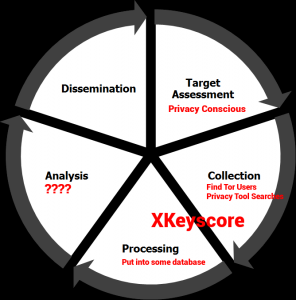Actionable Visualizations And Silo Breaking
This post on hackernews got my attention. It’s a IoT based visualization showing your activities and health metrics. It’s very flashy and interesting looking, like you’re going to see it in an episode of CSI Cyber. The term “actionable” I’ve usually applied to government types discussing the latest threat intel but we can also take it to apply with our visualizations.
Actionable visualizations, should provides the viewer with brand new information that could not have been easily concluded before. This was a common problem with threat intel practices in years past. You would collect tons and tons of information and render it into a beautiful graph and then look at it and go, “Yup, there’s a graph of all the stuff I already knew.”
Street Corners
Along the lines of circular information collection, I’ve always thought that one of my generation’s problems is how easy it is to never have to listen to disparate positions. I’m able to hide in my corner of the Internet and learn about only the things that I need, and you sit in your corner and we never have to interact. It’s a perspective I took away from the book, Amusing Ourselves To Death.
In my city, like your city, there are lots of different meetup groups and interest meetups and meetups related to meetups. We have programming languages, maker group, security groups, whatever, and they all operate in their own “silos” to take a corporate reference. There are a few outliers that will cross-pollinate by visiting each of the groups when possible and we consider them community advocates.
Where am I going with this?
I’m part of a few groups that will often throw events. We’ll do classes or social events that are open to the public and we want to get the word out but you know what, I just end up telling my own silo about an event that they already knew just like the IoT visualization that tells me what time I ate dinner. How do I stop telling people (and myself) about information that we already know?
Thus, my tryst into visjs to attempt to apply some of the threat intel type relationship modeling (like Maltego) to community outreach. The goal being: (just like how social media analysts and intelligence operatives) try to identify “key influencers” in the area. I’m trying to identify various active communities to make sure that they’re involved when trying to do outreach.
To self-criticize using my beginning premise, this is far from actionable at this point. I haven’t learned anything that I did not already know. I’ve sent out a comment to a few friends to try to expand this to get their perspective on relationships and see if 2600, Interlock, and other community groups might be able to try to break out of their own circular communications.
![52164288[1]](/wp-content/uploads/2014/07/521642881-300x225.jpg)
![52164332[1]](/wp-content/uploads/2014/07/521643321-300x225.jpg)



